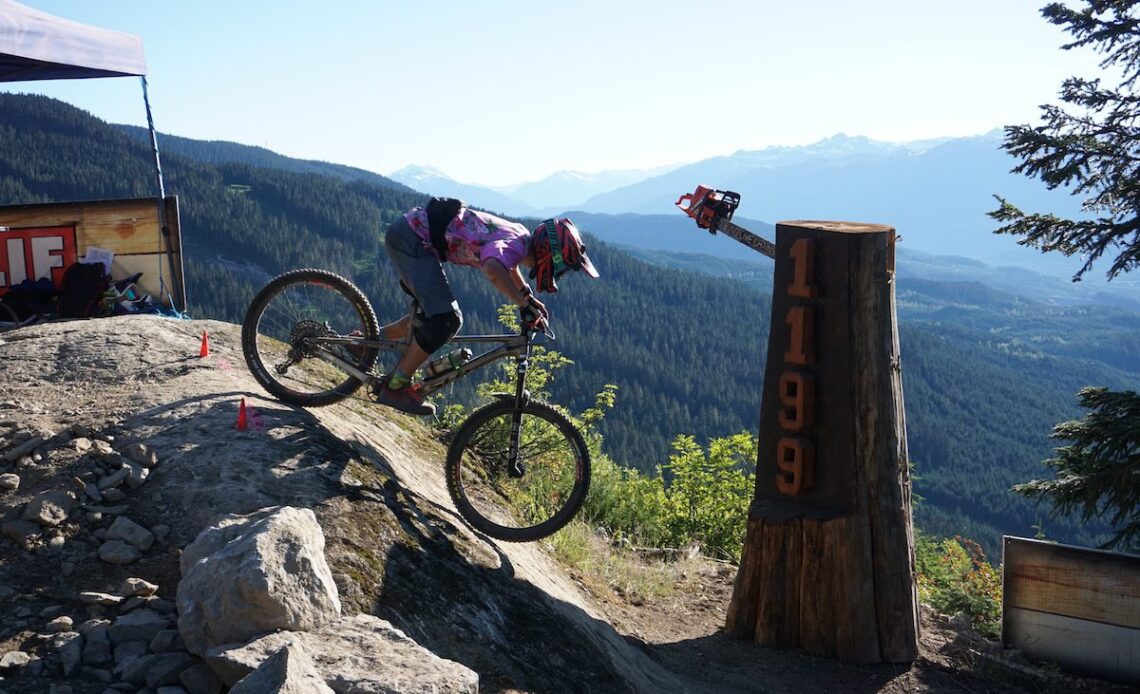Enduro World Series – now Enduro World Cup – is the pinnacle of the still somewhat new enduro race format. It pits riders against the hardest tracks (and some pretty brutal climbs) around the globe. Among international enduro venues, Whistler’s Crankworx week race is notorious for its physical and technical difficulty. Hard enough it has earned the nickname “Crankzilla.”
But how hard is it to race Crankworx EWS, really? I decided to sign up and find out.
With Crankworx returning to Whistler in 2022 after two years away, it was a great opportunity to jump in with the world’s best and see just how hard an Enduro World Series course is. Unsurprisingly, going from keyboard to race course, things went a little off the rails.
How did I do an EWS?
EWS had a somewhat unique race structure where anyone could sign up for the EWS100, an amateur event held on the exact same course as the pros, one day earlier. It’d be like signing up to race Fort William the day before the World Cup rolls through. Same course, same tape and, for EWS, same transfer stages. The only difference between the 100 and the EWS was that the pros did an extra Pro Stage on the same day the EWS100 (and EWS80) riders are doing their race day. It meant that, as long as you thought you could actually ride the course, you could sign up to race the same trails as the best pros in the world. Even if you are just someone who works for a cycling publication but rarely races enduro. Riders that did well enough could earn points to move up to the big show the next year.
With enduro moving under the World Cup banner this is, for the most part, no longer an option. Which is too bad, as there are few opportunities for us mortals to attempt an experience so close to what the pros race and in such similar conditions.
The practice: trying to take it easy
Practice day at the EWS, and now at the World Cup, is basically just riding the entire race day course. It’s the only chance to see the tracks you’ll be riding before you race them. It’s not mandatory, you can skip sections but, with how hard pro enduro races are, it’s really not a good idea. Why would you want to? Because last year’s Whistler course covered 41km of riding with 1,800m of elevation gain and, with one gondola bump up the mountain 2,800m of elevation loss.
That is a big day on the bike, even if it’s at “practice” pace. And there’s no real way to make gaining 1,800m of elevation in less than…
Click Here to Read the Full Original Article at Canadian Cycling Magazine…

